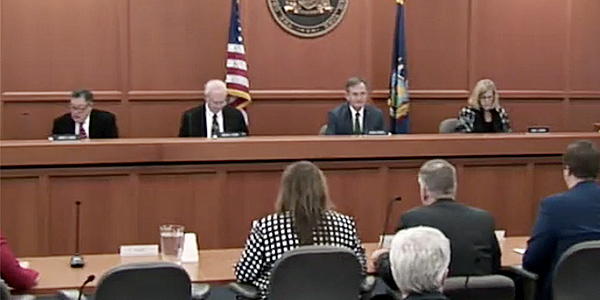By Michael Kuser
New York regulators on Thursday approved measures that will sharply increase the state’s energy storage and efficiency targets.
The rulings by the Public Service Commission will double New York’s existing 2025 storage goal to 3,000 MW by 2030 and require the state’s utilities to reduce building energy use by an additional 31 trillion British thermal units (TBtu) to meet an energy efficiency target of 185 TBtu by 2025.
“As the federal government continues to ignore the real and imminent dangers of climate change, New York is aggressively pursuing clean energy alternatives to protect our environment and conserve resources,” Gov. Andrew Cuomo said in a statement. “These unprecedented energy efficiency and energy storage targets will set a standard for the rest of the nation to follow, while supporting and creating jobs in these cutting-edge renewable industries.”
The commission’s Dec. 13 storage order (Case 18-E-0130) accepted with modifications the state’s six major utilities’ proposed “hybrid tariff” for storage systems paired with eligible electric generating equipment, directing each utility to distinguish between renewable and non-renewable energy injected into the grid.
The PSC’s March 2017 Value of Distributed Energy Resources Phase I order (Case 15-E-0751) directed utilities to compensate distributed energy resources through the “value stack,” a methodology that bases compensation on benefits provided. (See NYPSC Adopts ‘Value Stack’ Rate Structure for DER.)
The investor-owned utilities (Central Hudson Gas & Electric, Consolidated Edison, New York State Electric and Gas, Niagara Mohawk Power, Orange and Rockland Utilities, and Rochester Gas and Electric) now must file tariff amendments incorporating the value stack compensation for a hybrid facility and explaining how they will manage appropriate metering and controls under four potential usage models.
The commission said that “non-renewable energy is only eligible for compensation for energy value, demand reduction value, locational system relief value” and other capacity value, “while renewable energy is also eligible for compensation for environmental value, a market transition credit if applicable to the project” and other capacity value.
Market Acceleration
The commission’s order also authorized $310 million in market incentives to be administered by the New York Energy Research and Development Authority for pairing storage with solar projects, in addition to the $40 million announced in November. The order also directs the utilities to hold competitive procurements for 350 MW of bulk-sited storage systems.
PSC Chair John B. Rhodes said, “Energy storage is the key to unlocking renewables and reducing bottlenecks and costs on the grid. Today’s orders ramp up New York’s commitment and achievement, delivering bill savings for all New Yorkers while driving down carbon emissions.”
NYSERDA and the state’s Department of Public Service developed the PSC-mandated energy efficiency targets (Case 18-M-0084), which now include a 3% annual reduction in electricity sales by 2025 and 5 TBtu of savings from the installation of heat pumps, which help reduce emissions from the heating and cooling of buildings.
The commission also required that at least 20% of any additional public investment in energy efficiency go to help poor and middle-class New Yorkers gain access to renewable energy.
“New York’s clean energy industry welcomes today’s actions by the commission as important steps forward for energy storage and energy efficiency policy. Both are critical as New York continues its transition to a cleaner, more renewable and more efficient electricity system,” Anne Reynolds, executive director of the Alliance for Clean Energy New York, said in a statement.
In a separate ruling, the PSC approved Con Ed’s pilot smart meter pricing program (Case 18-E-0397) for customers in Staten Island, Westchester County and Brooklyn to be recruited by both opt-in and opt-out enrollment strategies and provided a one-year price guarantee. The program runs through March 2022.





